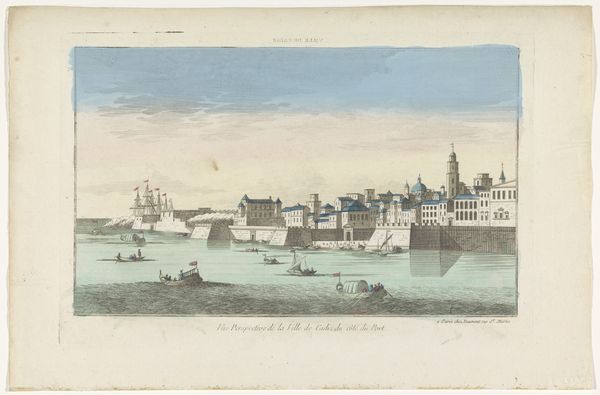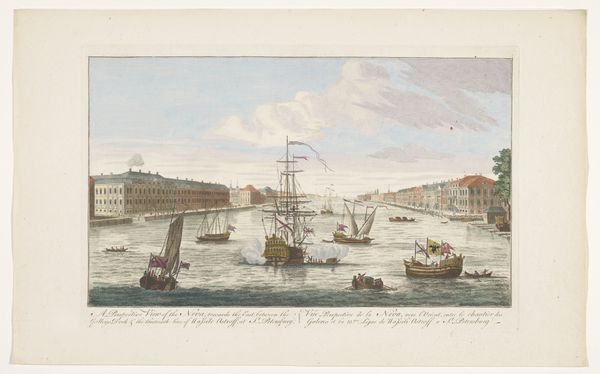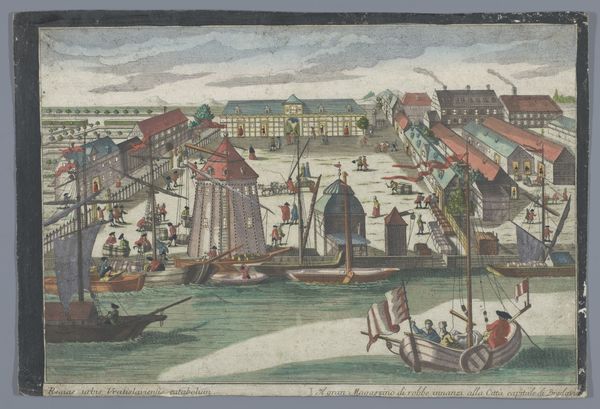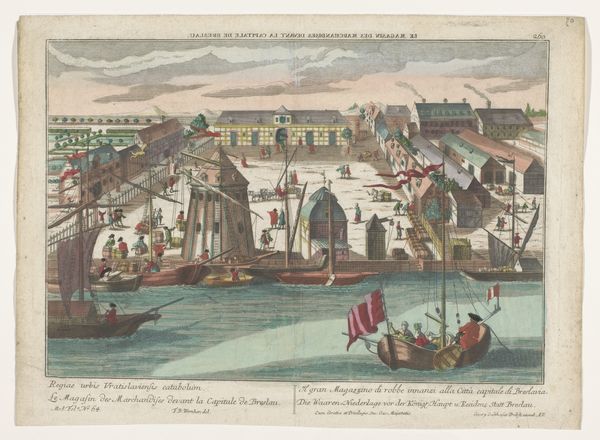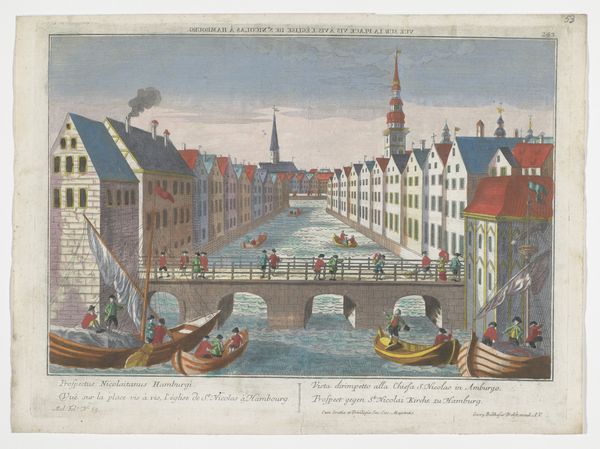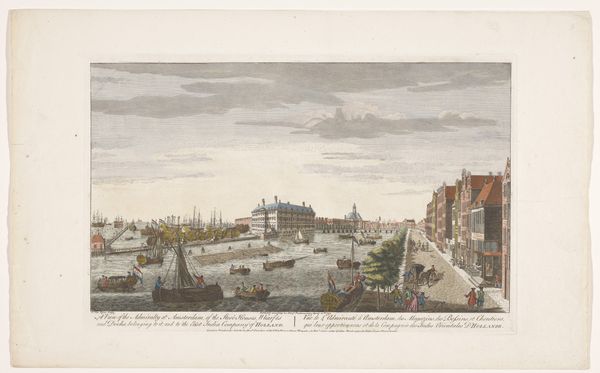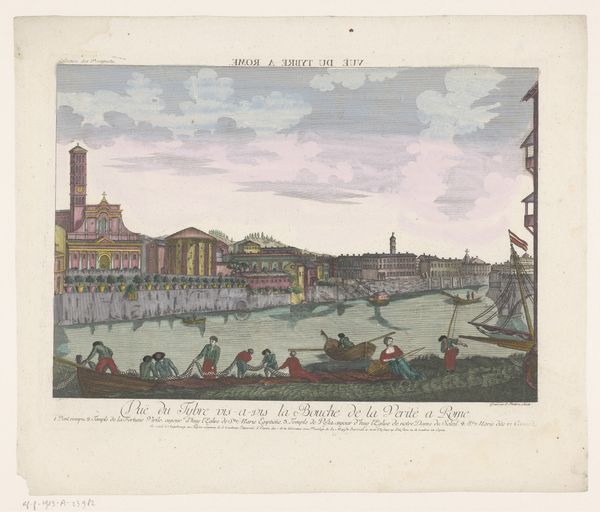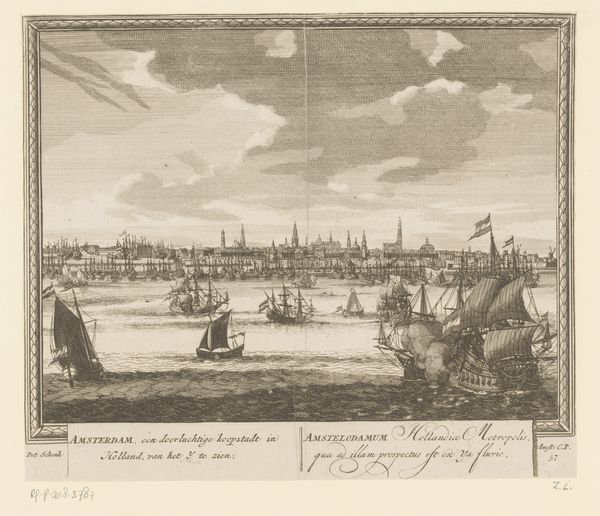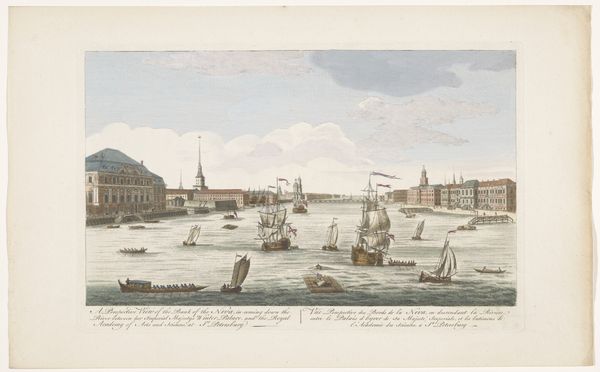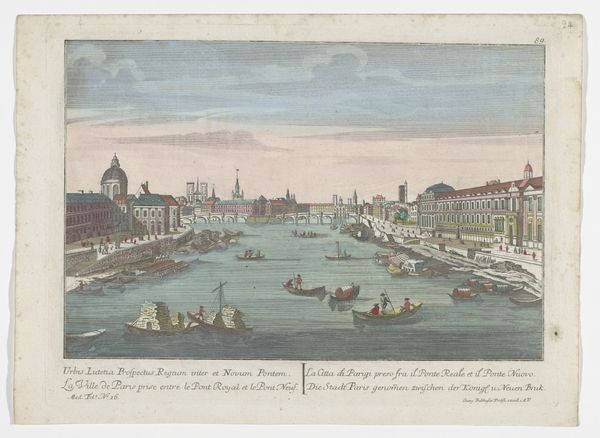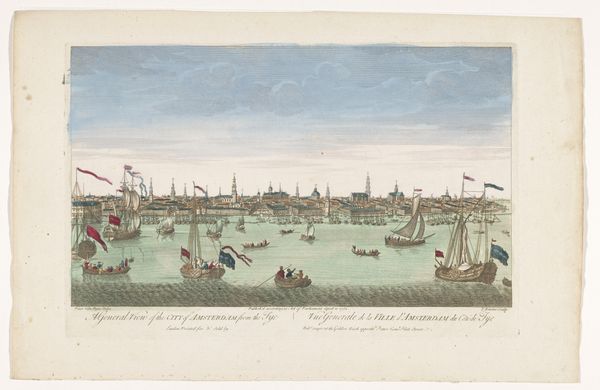
Gezicht op de Wester Nieuwe Hoofdpoort en de Ooster Nieuwe Hoofdpoort te Rotterdam 1742 - 1801
0:00
0:00
georgbalthasarprobst
Rijksmuseum
#
aged paper
#
toned paper
#
water colours
#
muted colour palette
#
handmade artwork painting
#
personal sketchbook
#
watercolour bleed
#
watercolour illustration
#
cartoon carciture
#
watercolor
Dimensions: height 314 mm, width 428 mm
Copyright: Rijks Museum: Open Domain
Curator: Georg Balthasar Probst gives us a glimpse of Rotterdam in "Gezicht op de Wester Nieuwe Hoofdpoort en de Ooster Nieuwe Hoofdpoort te Rotterdam," sometime between 1742 and 1801. Editor: My immediate reaction is a sense of quaint, bustling trade. The watercolor illustrations capture movement—figures on boats, windmills turning. The palette, however, feels very subdued. Curator: The materials tell a tale. This work on aged, toned paper suggests a specific era and its constraints, doesn’t it? The watercolour bleed adds a softness but also speaks to the artist's process, the interaction of pigment and paper. What was available influenced what could be created. Editor: Indeed. And consider the symbolic weight of the port itself. Throughout history, ports represented connection, commerce, and the flow of ideas. The gates especially are powerful symbols of entering and leaving a place—a threshold of possibility and change. Curator: Look closer and note the depiction of labour. Figures are loading and unloading goods. This wasn’t merely an aesthetic exercise but a visual document of economic activity. It subtly prompts us to consider the socio-economic realities of the era. The emphasis is less on artistic flourish, more on how things are made. Editor: Absolutely. There's a feeling of the everyday. This makes one think about the symbols people would see and use in daily life, those that shaped their understandings of the world and this city of Rotterdam, in particular. How did these images affirm their place within it? Curator: Perhaps this piece encourages us to reconsider what we deem important. It's a piece rooted in everyday experience, of working class, trade, and transport as essential functions, so maybe the value of such historical art lies in its raw simplicity. Editor: It certainly invites a richer understanding. I now appreciate how an image seemingly simple on its surface encodes much about the hopes and perceptions of its time, making its way forward in history as an ongoing reminder.
Comments
No comments
Be the first to comment and join the conversation on the ultimate creative platform.

